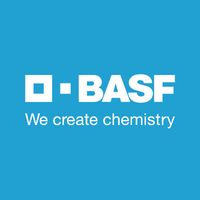The Dawn of Floating Hydrogen: A Game-Changer in Energy Transition
April 26, 2025, 10:20 am

Location: Germany, Rhineland-Palatinate, Ludwigshafen am Rhein
Employees: 10001+
Founded date: 1865
In the vast ocean of energy innovation, a new vessel has emerged. The world’s first floating ammonia-to-hydrogen cracker has set sail, marking a pivotal moment in the quest for sustainable energy. Developed by Wärtsilä and Höegh Evi, this groundbreaking technology transforms ammonia into hydrogen, a clean fuel for the future.
The project, announced in April 2023, is part of Norway’s ambitious green platform program. It represents a leap forward in the energy transition, enabling floating import terminals to produce hydrogen at an industrial scale. Imagine a ship that not only carries fuel but also transforms it into a cleaner form. This is the essence of the ammonia cracker.
The cracker boasts a modular design, allowing it to integrate seamlessly into both hybrid Floating Storage and Regasification Units (FSRUs) and dedicated Floating Hydrogen Terminals. Its scalability is impressive, with a sendout capacity of up to 210,000 tonnes of hydrogen annually. This is not just a small step; it’s a giant leap for the hydrogen economy.
Hydrogen is often hailed as the fuel of the future. It’s clean, versatile, and can be produced in regions rich in renewable energy. However, transporting and storing hydrogen presents challenges. Hydrogen has a low volumetric energy density, making it tricky to handle. Enter ammonia, a more stable and transport-friendly alternative. Ammonia can be stored in liquid form at moderate pressures and temperatures, making it ideal for long-distance shipping. Once it reaches its destination, the ammonia cracker converts it back into hydrogen, ready for distribution into the energy grid.
The significance of this technology cannot be overstated. The European Union aims to import 10 million tonnes of renewable hydrogen annually by 2030. This floating infrastructure, equipped with ammonia cracking technology, can unlock large-scale imports. It provides a stable energy source for hard-to-abate industries, ensuring a balanced energy system. As the hydrogen grid develops, this technology will play a crucial role in meeting Europe’s ambitious targets.
Funding for this innovative project comes from the Norwegian Government’s green platform program, which contributed approximately EUR 5.9 million, covering about half of the total budget. The ammonia cracker was constructed at the Sustainable Energy’s Norwegian Catapult Center in Stord, Norway. Collaboration is key here, with partners including the Institute for Energy Technology (IFE), the University of South-East Norway, Sustainable Energy, and BASF SE. Together, they are forging a path toward a greener future.
The floating ammonia-to-hydrogen cracker is not just a technological marvel; it’s a beacon of hope in the fight against climate change. As the world grapples with the urgent need for sustainable energy solutions, this project stands out. It addresses the dual challenges of hydrogen storage and transportation while paving the way for a more resilient energy infrastructure.
The leadership of Wärtsilä and Höegh Evi is commendable. They are not just participants in the energy transition; they are pioneers. Their commitment to innovation and sustainability is evident in every aspect of this project. The floating terminals and cracking technology they have developed can unlock the full potential of global value chains for green hydrogen. This will provide European industries with a reliable supply of clean energy within this decade.
The future of energy must be green. This sentiment resonates deeply within the industry. The technological advancements represented by the ammonia cracker are essential for achieving this goal. As countries strive to reduce their carbon footprints, solutions like this will be vital.
Innovation Norway, the Norwegian trade promotion organization, plays a crucial role in this landscape. They are responsible for allocating funds within the Green Platform program, ensuring that projects like the ammonia cracker receive the support they need to thrive. Their vision aligns with the broader goal of transitioning to a sustainable energy future.
As we look ahead, the implications of this technology extend beyond Europe. The floating ammonia-to-hydrogen cracker could serve as a model for other regions. Countries with abundant renewable resources can leverage this technology to produce and export hydrogen, creating a global market for clean energy.
In conclusion, the floating ammonia-to-hydrogen cracker is more than just a technological achievement; it’s a symbol of progress in the energy transition. It embodies the spirit of innovation and collaboration needed to tackle the pressing challenges of our time. As we navigate the turbulent waters of climate change, this project shines a light on the path forward. The future of energy is not just floating on the horizon; it’s here, ready to transform our world.
The project, announced in April 2023, is part of Norway’s ambitious green platform program. It represents a leap forward in the energy transition, enabling floating import terminals to produce hydrogen at an industrial scale. Imagine a ship that not only carries fuel but also transforms it into a cleaner form. This is the essence of the ammonia cracker.
The cracker boasts a modular design, allowing it to integrate seamlessly into both hybrid Floating Storage and Regasification Units (FSRUs) and dedicated Floating Hydrogen Terminals. Its scalability is impressive, with a sendout capacity of up to 210,000 tonnes of hydrogen annually. This is not just a small step; it’s a giant leap for the hydrogen economy.
Hydrogen is often hailed as the fuel of the future. It’s clean, versatile, and can be produced in regions rich in renewable energy. However, transporting and storing hydrogen presents challenges. Hydrogen has a low volumetric energy density, making it tricky to handle. Enter ammonia, a more stable and transport-friendly alternative. Ammonia can be stored in liquid form at moderate pressures and temperatures, making it ideal for long-distance shipping. Once it reaches its destination, the ammonia cracker converts it back into hydrogen, ready for distribution into the energy grid.
The significance of this technology cannot be overstated. The European Union aims to import 10 million tonnes of renewable hydrogen annually by 2030. This floating infrastructure, equipped with ammonia cracking technology, can unlock large-scale imports. It provides a stable energy source for hard-to-abate industries, ensuring a balanced energy system. As the hydrogen grid develops, this technology will play a crucial role in meeting Europe’s ambitious targets.
Funding for this innovative project comes from the Norwegian Government’s green platform program, which contributed approximately EUR 5.9 million, covering about half of the total budget. The ammonia cracker was constructed at the Sustainable Energy’s Norwegian Catapult Center in Stord, Norway. Collaboration is key here, with partners including the Institute for Energy Technology (IFE), the University of South-East Norway, Sustainable Energy, and BASF SE. Together, they are forging a path toward a greener future.
The floating ammonia-to-hydrogen cracker is not just a technological marvel; it’s a beacon of hope in the fight against climate change. As the world grapples with the urgent need for sustainable energy solutions, this project stands out. It addresses the dual challenges of hydrogen storage and transportation while paving the way for a more resilient energy infrastructure.
The leadership of Wärtsilä and Höegh Evi is commendable. They are not just participants in the energy transition; they are pioneers. Their commitment to innovation and sustainability is evident in every aspect of this project. The floating terminals and cracking technology they have developed can unlock the full potential of global value chains for green hydrogen. This will provide European industries with a reliable supply of clean energy within this decade.
The future of energy must be green. This sentiment resonates deeply within the industry. The technological advancements represented by the ammonia cracker are essential for achieving this goal. As countries strive to reduce their carbon footprints, solutions like this will be vital.
Innovation Norway, the Norwegian trade promotion organization, plays a crucial role in this landscape. They are responsible for allocating funds within the Green Platform program, ensuring that projects like the ammonia cracker receive the support they need to thrive. Their vision aligns with the broader goal of transitioning to a sustainable energy future.
As we look ahead, the implications of this technology extend beyond Europe. The floating ammonia-to-hydrogen cracker could serve as a model for other regions. Countries with abundant renewable resources can leverage this technology to produce and export hydrogen, creating a global market for clean energy.
In conclusion, the floating ammonia-to-hydrogen cracker is more than just a technological achievement; it’s a symbol of progress in the energy transition. It embodies the spirit of innovation and collaboration needed to tackle the pressing challenges of our time. As we navigate the turbulent waters of climate change, this project shines a light on the path forward. The future of energy is not just floating on the horizon; it’s here, ready to transform our world.
